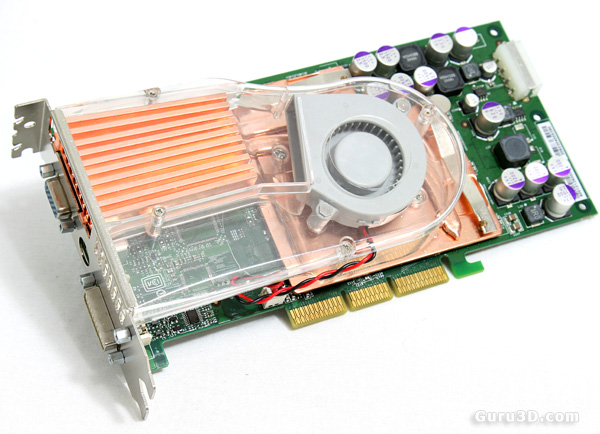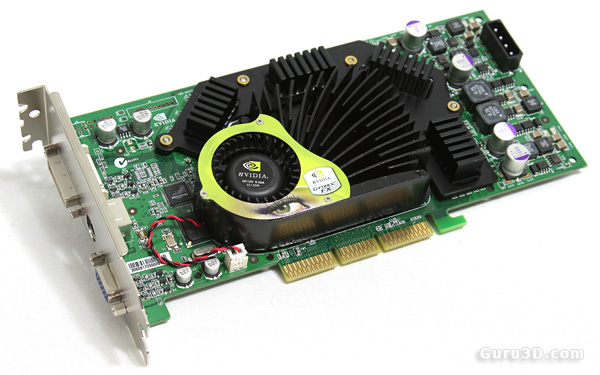5

Stepping it up, an engineering sample NVIDIA GeForce 4 Ti 4600. A 300 MHz core, and the GeForce 4 Ti 4600 has it's memory clocked at 650 MHz (2x325) at default. An era where the GPU already was at 63 million transistors. In pale comparison, the current GT200 GPUs empowering GTX 275/280/285 have roughly 1400 million transistors.
This is the year that LCD screens start to get popular. 1024x768 is going mainstream.

It's 2003 and oh dear .. everyone can remember the dust-buster. Here's where GPU architecture really started to change. GeForce FX 5800 Ultra with DDR2 @ 1000 MHz memory folks, I still have the original :)
Here starts the AGP 8x era, and though the card failed miserably, it was a massive step forward in the pixel pipeline and it's design though. This is the moment in time where we leave direct 8 and enter DirectX 9. It's the moment in time where Pixel and Vertex shaders really started to change the way we render games.
And as testament, to date DX9 is one of the most used APIs out there.
It's the year 3Dmark03 was introduced and where things got really serious for Futuremark. We are now at Detonator drivers 42.68. The GPU is now capable of DirectX9 Pixel Shaders 2.0+, Vertex Shader 2.0+ and OpenGL.
NVIDIA called it's GPU the CineFX GPU back then. Then, the shift in architecture was a huge success, yet the 5800 Ultra was trashed based on the horribly loud cooler called FlowFX, and lackluster performance.

In May 2003, from the new FX series the new GeForce FX 5900 Ultra derived, aimed at the Radeon 9800. It had probably to date the best looking cooler ever. And sure, I know that is personal. But just look at that, you could fit that on a Formula One car and you wouldn't notice it.
This particular graphics card was clocked at a core speed of 450 MHz and was equipped with a whopping 256 MB memory (256-bit). I remember that the memory on this card came from Hynix and was rated 2.2ns which had a nominal speed of 2x425=850 MHz which is the memory clock frequency. Back then insane stuff, and mind you... this was summer 2003!

We enter the year 2004, we surely cant skimp on GeForce series 6 = NV40. Man the card above was popular! Above you can see the GeForce 6800 GT, that thing was the shiznit alright. Heaps of performance for a fair price.
-
Pixel pipelines: 16
-
222 Million transistors
-
350 MHz Core Clock
-
500 MHz memory Clock
- 256-bit GDDR3 memory
We just entered Socket 775, I was running a high-end Pentium 4 class 3.2 GHz processor on a 915p/g chipset and doood .. it had a PCI-Express slot :) Though the model above is an AGP 8x version though.
The card was priced at $399 USD and selling like hot buns from the oven, it was offering every bit of performance the GeForce FX series failed to deliver.
